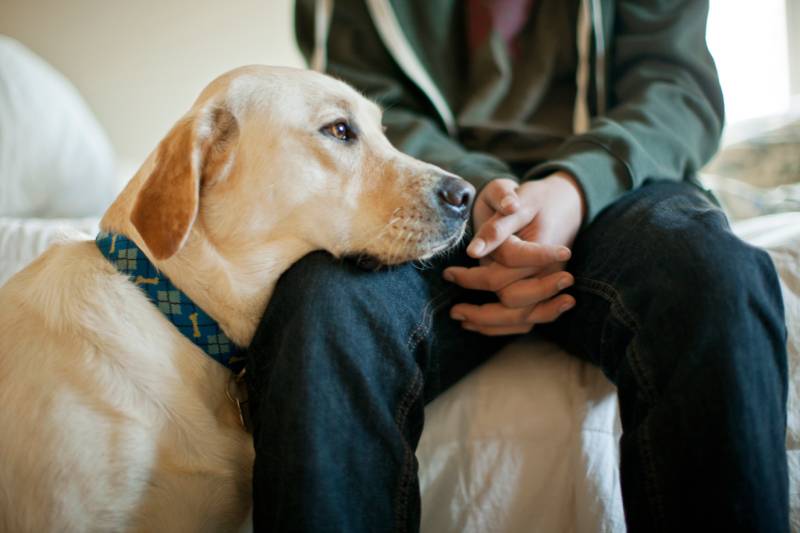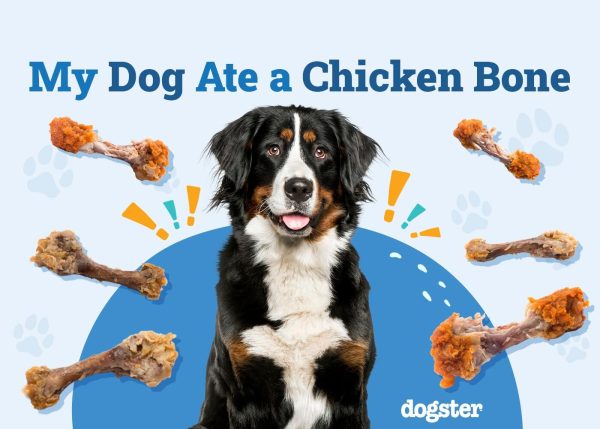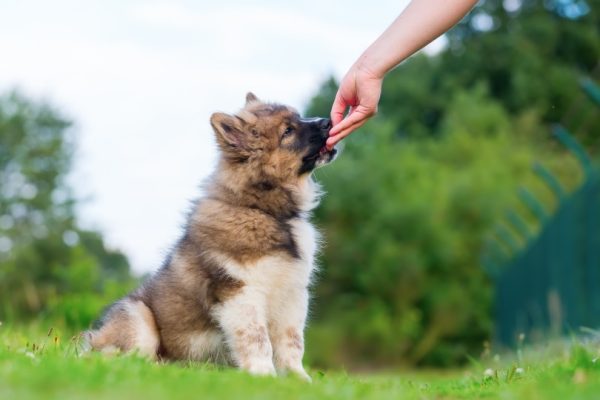We have all heard about humans developing post-traumatic stress disorder, or PTSD. However, it wasn’t until recently that we started hearing about the development of PTSD in dogs. It’s true: Dogs can get PTSD. Although most of the focus is on military and police dogs, even family pets can get PTSD for various reasons. So, which situations can cause PTSD in dogs, what are the signs, and what can be done to help dogs with PTSD? Let’s explore these topics together.
The 8 Common Causes of PTSD in Dogs
Being part of military and police work are the most common causes of PTSD in dogs, so they are the most studied and reported on. However, according to Dr. Lori Teller at the Texas A&M College of Veterinary Medicine, between 5% and 17% of all dogs develop symptoms of PTSD. Here are eight common causes of PTSD in dogs that haven’t been part of military or police work:
1. Natural Disasters
If a dog experiences their house being damaged or themselves or someone else being hurt in a hurricane or other natural disaster, there is a chance that the experience could result in the development of PTSD. Even the destruction of trees around them could lead to serious mental health issues.
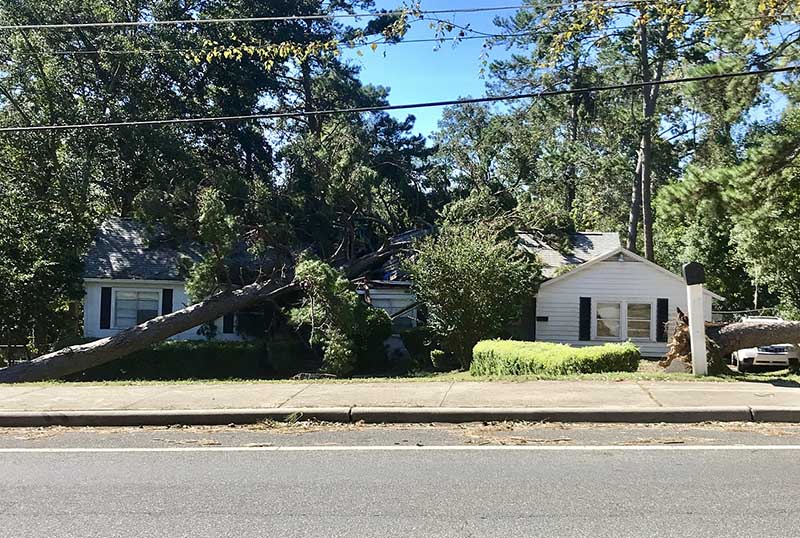
2. Serious Accidents
Being seriously injured in an accident can cause a dog to develop PTSD. It might be from getting in a car accident with their owner, breaking a bone during a fall, or having a heavy object fall on them from a shelf that accidentally gets knocked over. Any serious accident can result in a dog developing anxiety and being frightened of everyday objects, places, or people.
3. Serious Injuries
One thing that can cause PTSD in dogs is severe injury. Being hit by a car, getting attacked by another dog, and falling from a great height can lead to PTSD.

4. Baiting and Fighting
Dogs that are used as bait or fighting dogs often develop PTSD because their experiences are traumatic. A bait dog is presented in front of dogs being trained to fight other dogs and is attacked and often killed. Dogs trained to fight typically do so in a ring against other dogs to the death. It’s no wonder why dogs surviving these experiences develop mental health issues.
5. Puppy Mills
Being born or raised to breed in a puppy mill is a terrible experience for dogs. They are often kept in cramped kennels without room to walk or stretch their legs. They are also often kept with multiple other dogs. Feces can build up underneath them, and they can develop problems like skin infections and parasite infestations, including mange. Any dog that makes it out of a puppy mill is appreciative but may harbor problems that lead to the development of PTSD.
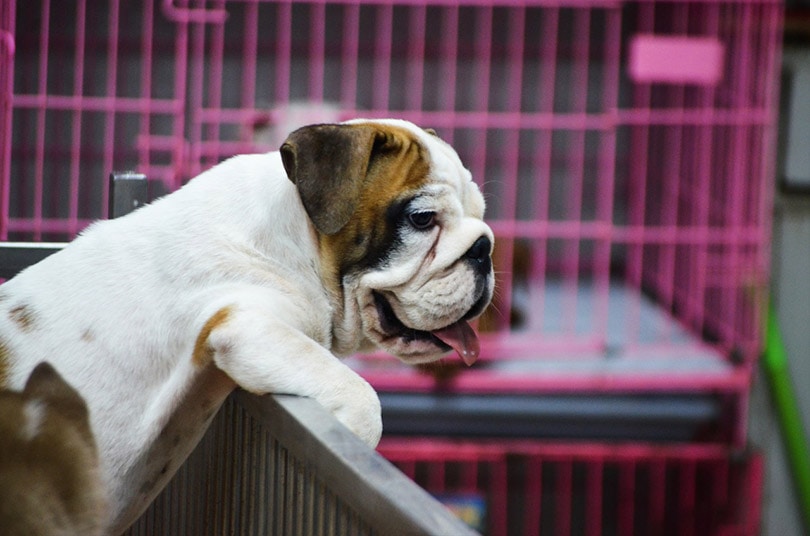
6. Severe Abuse
Abuse comes in many forms, and if it’s severe enough, it can lead to PTSD in dogs just like it does in people. Being chained up 24 hours a day, being beaten regularly, being kept in a kennel for many days at a time (if not longer), being shot with any type of gun, being mutilated in any way, being thrown against a wall or off a roof, and not being given enough food, water, housing, and protection are all types of abuse that might have happened to a dog with PTSD.
7. Stray Living
Dogs that experience a stray lifestyle, even temporarily, have a tough time meeting their needs to stay healthy and free of illnesses and out of dog fights. They are also much more likely to experience accidents and injuries. So, even though the stray lifestyle itself may not result in the development of PTSD in a dog, the experiences they had while being a stray might be the culprits.

8. Abandonment
Most dogs become highly attached to their owners as time goes on. They think of their owners as an essential part of their pack. If a canine loses their bond to their owners, whether intentionally by the owner or due to circumstances like death, it could have a lasting impact on the dog. In a small percentage of dogs, this experience can result in PTSD signs.

The 7 Signs of PTSD in Dogs
A dog cannot explain their feelings to others as humans can through vocal communication. Therefore, they often display their PTSD through their behaviors, which are usually negative. There are several signs that a dog with PTSD may display as time goes on.
1. Aggression
Sudden aggression toward other dogs, people, or even objects when otherwise calm and collected is a sign that something is amiss with a canine’s mental health. A dog might be fine living with another dog most of the time but will become aggressive when a line is crossed in their mind. They might lash out at strange dogs that they don’t know due to distrust. They might even become aggressive toward strange people who make them feel uncomfortable.
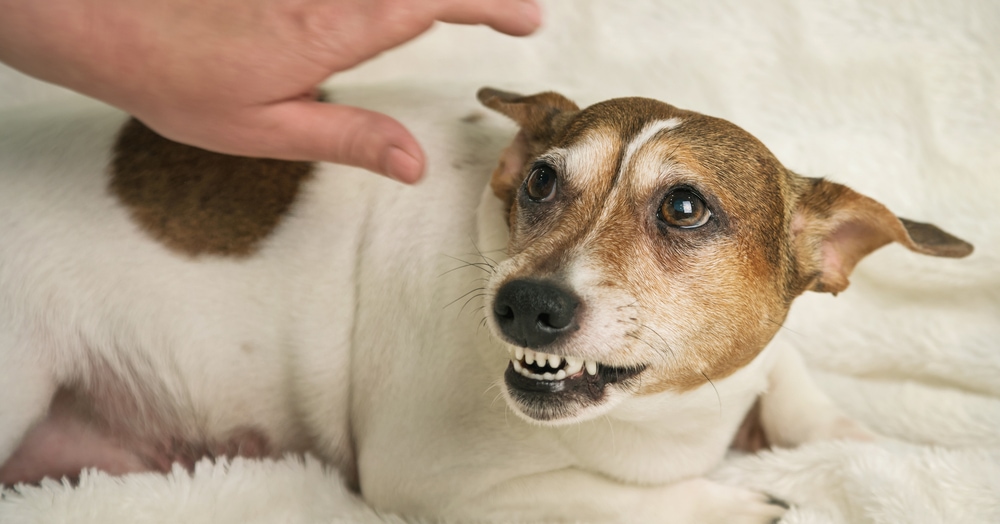
2. Distrust
A dog with PTSD may develop a distrust for people and other animals. They might not distrust everyone automatically but will if a person or animal acts in a way that they perceive as threatening or aggressive. Distrust might make a dog stay away from the person or animal. It could also cause behavior such as growling, whimpering, and shivering.
3. Shyness
Some dogs are simply shy by nature, but most are not. However, if a dog experiences some form of PTSD, shyness might be a behavior that they exhibit to try to deal with their mental distress. A shy dog will likely hide in a corner or another room when people they don’t live with are around. They may not like to spend time in public areas with people or other dogs. They might also shy away from loud noises, squeaky toys, and fast-moving objects.

4. Excessive Restlessness
A dog that can’t sleep and paces relentlessly around the house or is just restless in general may be exhibiting signs of PTSD. Their stress and anxiety can feel overwhelming and may stop a dog’s brain from being able to relax enough to sleep or even sit down for any significant amount of time.
5. Excessive Barking
An easy-to-spot sign of PTSD is excessive and relentless barking for no reason. Whether home alone or not, a dog with PTSD will spend their time barking at windows, walls, people, and objects to release some of the pent-up stress and anxiety that they are feeling. Sometimes, the barking is accompanied by whining.
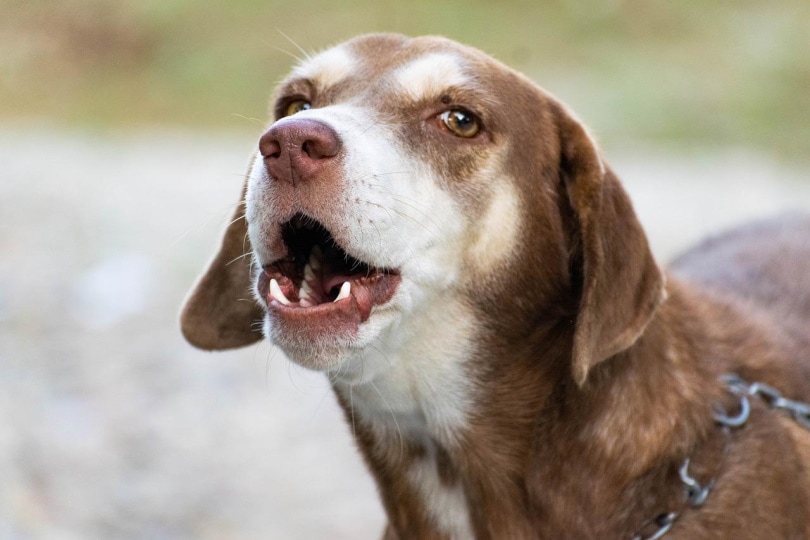
6. Extreme Vigilance
Dogs that carry fear due to PTSD tend to be extremely vigilant of their situations and surroundings. They might become highly alert and sit in a corner while watching everything that goes on when visitors enter their homes. They probably also spend most of their time looking for trouble whenever they visit public spaces.
7. People or Place Avoidance
One sign of PTSD to be aware of is the general avoidance of people, places, and things. Anything that might remind a dog of the trauma that they experienced in the past is something that they will want to avoid at all costs, whether it means running away, hiding under a table, or simply avoiding eye contact.
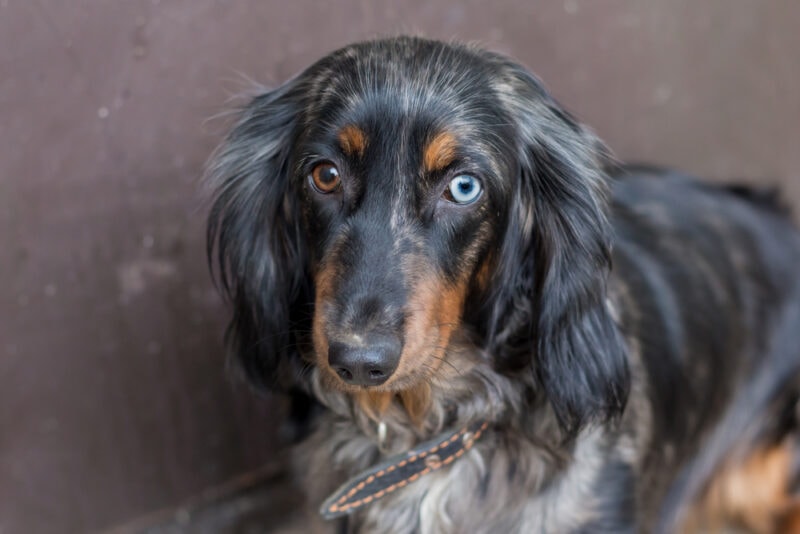

The 5 Ways to Help Dogs With PTSD
Fortunately, there are a few ways to help dogs with PTSD so they can be relieved of at least some of the stress, anxiety, and other feelings that overwhelm them. Sometimes, PTSD support can be provided by an owner at home, but extra support is often required. The following treatment options should be used in conjunction for the best results.
1. Work With a Veterinary Behaviorist
A veterinary behaviorist will utilize a combination of medication and therapy to help treat a dog with signs of PTSD. One type of therapy called systemic desensitization is particularly effective for helping canines overcome their symptoms. This involves slowly exposing the dog to whatever creates their anxiety and stress until they are no longer affected by their triggers. This takes time, positive reinforcement, and consistency.
If you need to speak with a vet but can't get to one, head over to PangoVet. It's an online service where you can talk to a vet online and get the personalized advice you need for your pet — all at an affordable price!

2. Focus on Positive Reinforcement
Just as positive reinforcement is used during therapy sessions with a veterinary behaviorist, the practice can be utilized at home and while out and about. Always redirect a dog with PTSD instead of scolding them. Praise good behavior and ignore bad behavior whenever possible. Never, under any circumstances, use physical punishment. Negative reinforcement is likely to increase the stress and anxiety that a dog with PTSD feels.
3. Make Daily Exercise a Priority
Exercise helps release negative feelings from the body and mind, which is extremely helpful for dogs with PTSD. It also helps wear out the dog, which can make it easier for them to relax and sleep. Therefore, dogs with PTSD need to get plenty of daily exercise. A couple of walks, playing fetch, and trips to the dog park are all excellent options.

4. Stick to a Daily Routine
A routine is important for dogs with PTSD because it helps eliminate the “unknowns” in their lives. Without it, they may wonder what could happen next and be uncertain about everything. Establishing a daily routine will assure a PTSD-stricken dog that they can count on what will happen and be able to relax in their daily life. Daily exercise, mealtimes, cuddling time, and downtime should all be regulated.
5. Establish a Safe Space
Creating a safe space for your dog to hang out when they are especially stressed and anxious is an effective way to provide them with what they need to establish a feeling of safety and confidence. The safe space can be a kennel in a corner of the living room, with a comfy bed and a toy in it, or an entire bedroom, where the door can be closed off from the rest of the house.
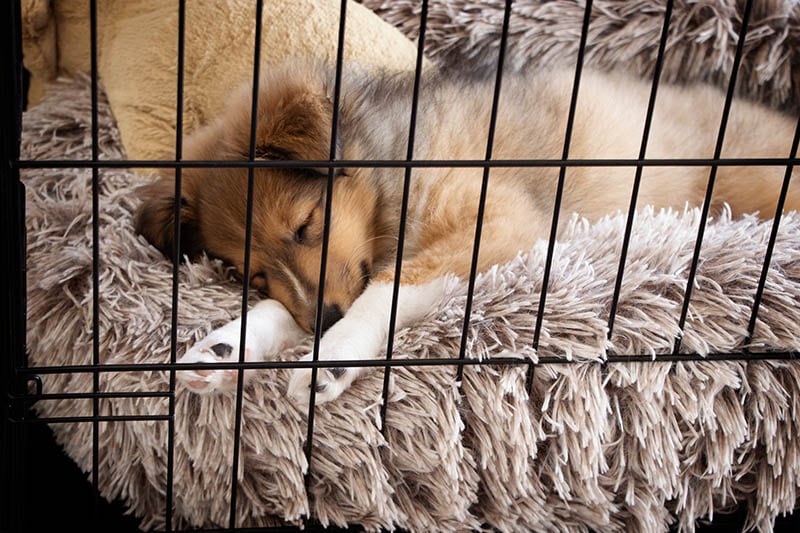
Conclusion
Sadly, it is possible for a dog to develop PTSD. Fortunately, owners and vets can help them through their trauma with various therapies and treatments. If you don’t know the history of a dog that you care for or spend time around, keep an eye out for signs of PTSD.
- See also: Head Pressing in Dogs
Featured Image Credit: Erickson Stock, Shutterstock

